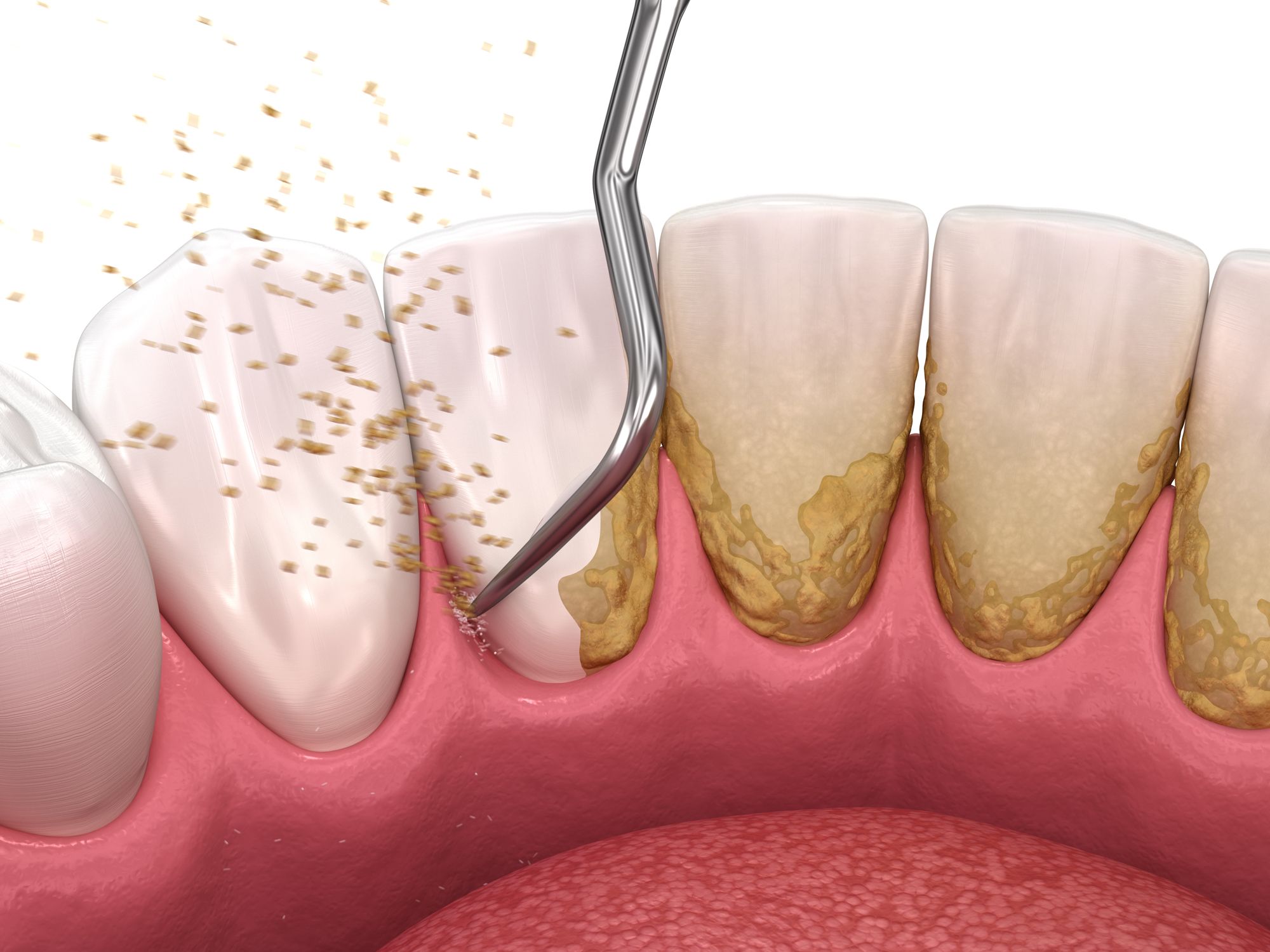The Evolution of Nonsurgical Periodontal Therapy: A Three-Part Series
In this 3-part series, we examine the history and evolution of nonsurgical periodontal therapy by taking a deep dive into scaling and root planing.
The Evolution of Nonsurgical Periodontal Therapy: A Three-Part Series. Photo courtesy of Alexander Mitiuc/stock.adobe.com.

Part I: Scaling and Root Planing
Scaling and root planning (SRP), as a component of nonsurgical periodontal therapy, is an essential part of successful periodontal therapy. In 2002, Cobb wrote that SRP remains the “gold standard” to which more recently developed therapeutic modalities must be compared.1 SRP is a misnomer, however, because clinicians no longer root plane roots like they did years ago. Instead, root surfaces are thoroughly debrided of calculus and plaque- biofilm.
As prevention-oriented healthcare providers, dental hygienists have been educated since the profession’s inception in the early 1900s to improve the public’s oral health. In the early days of dental hygiene, improving oral hygiene mostly involved cleansing of the mouth, gums, teeth, and dentures. Staining dental plaque with disclosing solution and showing patients supragingival dental plaque along with measuring/tracking it was emphasized.
In the mid-1960s, the microbial etiology of periodontal diseases was established based on experimental gingivitis studies.2 In the 1960s and 1970s, bacteria were considered to play a role in the etiology of periodontal disease, but little was known at the time about host response and oral biofilm interactions.3
Removal of infected cementum on the tooth root via SRP was considered essential for re-establishing periodontal health. Today, current theory postulates that periodontal inflammation is the result from the interaction of the host immune system to a dysbiotic subgingival biofilm.Microbial biofilms form unique microbial ecologies as they transition from health to disease but little is known about how this transition alters the virulence of the biofilm and host response.4
In the 1970s, dental hygienists were treating patients with ultrasonic scalers that were designed for gross scaling and the removal of supragingival calculus. There was only one tip available and it was too bulky to fit into the gingival sulcus. At that time, dental hygienists who mostly used ultrasonics with little hand instrumentation were called “Cavitron Queens”. Scaling and root planing was a calculus-removal procedure that involved a fine scaling appointment with gracey curettes. The nonsurgical treatment of periodontal diseases was limited to scaling and root planing with the focus on calculus removal and achieving a “glassy smooth” root surface. Since clinicians were working blind, aggressive instrumentation of tooth crowns and roots sometimes caused problems such as hypersensitivity and irreversible structural damage.
It wasn’t until the 1980s that the conventional scaling and root planing procedure with smooth root surface endpoint was questioned. Several in vitro studies showed that biofilm was superficially located on root surfaces, and it was discovered that its disruption could be easily achieved by ultrasonic instrumentation of the root surface. Root surface debridement versus root planing became the new norm.
Historically, it was believed that aggressive root planing and scaling was required to remove bacterial endotoxins. Dental hygiene students were taught for several decades to hand sharpen gracey curettes until they became proficient to remove endotoxins in cementum and calculus. In-vitro studies confirmed that endotoxins were weakly adherent to root surfaces and that it was no longer necessary to aggressively remove cementum. In one experimental study, it was observed (using electronic microscopy) that the epithelial attachment on calculus that had been treated with chlorhexidine gluconate had the exact same ultrastructure as a normal epithelial attachment and periodontal healing occurred, even in the presence of calculus as long as the subgingival biofilm was disrupted. The lesson here was that as long as the subgingival biofilm was removed (along with the subgingival calculus which acts as a major bioflm-retentive factor), the intentional removal of root substance and contaminated cementum is not required for successful treatment.5
In recent decades, instrumentation for scaling and root planing has changed.Instead of hand instruments being the mainstream of dental hygiene instrumentation, ultrasonics have replaced them as the preferred instrumentation method of choice. These sophisticated machines with micro-ultrasonic inserts, (thin inserts) have become the norm in daily practice and have been shown to improve clinician ergonomics and decrease fatigue. Tip designs have become more powerful, efficient, and comfortable for the clinician.
Many clinicians never become proficient at sharpening hand instruments. In one study by Laughter, the researcher discovered that clinicians are not proficient in sharpening skills five years or longer after graduation.6
In June 2020, the American Dental Association’s (ADA) Advisory Task Force on Dental Practice Recovery during the Covid-19 pandemic issued guidelines that included the preferred use of hand instrumentation over ultrasonic instrumentation for plaque and calculus removal to reduce aerosol production.7,8 Although studies have shown that hand and power instrumentation are equally effective, depending on the extent of the calculus and the depth of the pocket, manual instrumentation may be more time-consuming. As such, many dental hygienists relegated to hand instrumentation only during the height of the Covid-19 public health crisis expressed frustration not only with their inability to use ultrasonics for difficult cases, but the lack of time they were given to perform procedures.
Although scaling and root planing remains the gold standard of non-surgical periodontal therapy, the next column explores more recently developed therapeutic modalities and adjuncts and looks at the evidence to support or deny their use.
References
Cobb CM. Clinical significance of nonsurgical periodontal therapy: an evidence-based perspective of scaling and root planing. J Clin Periodontol 2002; 29(2): 22-32.
Loe H et al. Experimental gingivitis in man. Periodontol. 1965 May-Jun;36:177-87.
https://fgdpscotland.org.uk/wp-content/uploads/2016/05/Perio-RSD.pdf
Socransky. SS. Relationship of bacteria to the etiology of periodontal disease. J Dent Res. 1970;49(2):203-222.
Heinz-Mayfield LJ, Lang NP. Surgical and nonsurgical periodontal therapy. Learned and unlearned concepts. Periodontol 2000. 2013; 63: 218-231.
Laughter L. Your best efforts. RDH mag. 2015.
https://oralhealth.cochrane.org/news/personal-protective-equipment-commentary-dental-and-oral-health-care-team
American Dental Association. Return to Work Interim Guidance Toolkit. Accessed April 21, 2021. Available at: actx.edu/dent_l_hy/files/filecabinet/folder3/DHYG_1319.pdf.